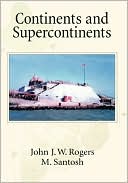Category Books
- Fiction Books & Literature
- Graphic Novels
- Horror
- Mystery & Crime
- Poetry
- Romance Books
- Science Fiction & Fantasy
- Thrillers
- Westerns
- Ages 0-2
- Ages 3-5
- Ages 6-8
- Ages 9-12
- Teens
- Children's Books
- African Americans
- Antiques & Collectibles
- Art, Architecture & Photography
- Bibles & Bible Studies
- Biography
- Business Books
- Christianity
- Computer Books & Technology Books
- Cookbooks, Food & Wine
- Crafts & Hobbies Books
- Education & Teaching
- Engineering
- Entertainment
- Foreign Languages
- Game Books
- Gay & Lesbian
- Health Books, Diet & Fitness Books
- History
- Home & Garden
- Humor Books
- Judaism & Judaica
- Law
- Medical Books
- New Age & Spirituality
- Nonfiction
- Parenting & Family
- Pets
- Philosophy
- Political Books & Current Events Books
- Psychology & Psychotherapy
- Reference
- Religion Books
- Science & Nature
- Self Improvement
- Sex & Relationships
- Social Sciences
- Sports & Adventure
- Study Guides & Test Prep
- Travel
- True Crime
- Weddings
- Women's Studies
Continents and Supercontinents » (New Edition)

Authors: John J. W. Rogers, M. Santosh
ISBN-13: 9780195165890, ISBN-10: 0195165896
Format: Hardcover
Publisher: Oxford University Press, USA
Date Published: August 2004
Edition: New Edition
Author Biography: John J. W. Rogers
Book Synopsis
To this day, there is a great amount of controversy about where, when and how the so-called supercontinents—Pangea, Godwana, Rodinia, and Columbia—were made and broken. Continents and Supercontinents frames that controversy by giving all the necessary background on how continental crust is formed, modified, and destroyed, and what forces move plates. It also discusses how these processes affect the composition of seawater, climate, and the evolution of life.
Rogers and Santosh begin with a survey of plate tectonics, and go on to describe the composition, production, and destruction of continental and oceanic crust, and show that cratons or assemblies of cratons became the first true continents, approximately one billion years after the earliest continental crust evolved. The middle part of the book concentrates on supercontinents, beginning with a discussion of types of orogenic belts, distinguishing those that formed by closure of an ocean basin within the belt and those that formed by intracontinental deformation caused by stresses generated elsewhere. This information permits discrimination between models of supercontinent formation by accretion of numerous small terranes and by reorganization of large old continental blocks.
This background leads to a description of the assembly and fragmentation of supercontinents throughout earth history. The record is most difficult to interpret for the oldest supercontinent, Columbia, and also controversial for Rodinia, the next youngest supercontinent. The configurations and pattern of breakup of Gondwana and Pangea are well known, but some aspects of their assembly are unclear. The book also briefly describes the histories of continents after the breakup of Pangea, and discusses how changes in the composition of seawater, climate, and life may have been affected by the sizes and locations of continents and supercontinents.
Table of Contents
1. Continental Drift—The Road to Plate Tectonics
2. Plate Tectonics Now and in the Past
n 3 Creation, Destruction, and Changes in Volume of Continental Crust through Time
4. Growth of Cratons and Their Post-Stabilization Histories
5. Assembly of Continents and Establishment of Lower Crust and Upper Mantle
6. Assembly and Dispersal of Supercontinents
7. Supercontinents Older Than Gondwana
8. Gondwana and Pangea
9. Rifting of Pangea and Formation of Present Ocean Basins
10. History of Continents after Rifting from Pangea
11. Effects of Continents and Supercontinents on Climate
12. Effects of Continents and Supercontinents on Organic Evolution Appendix A. Seismic Methods Appendix B. Heat Flow and Thermal Gradients Appendix C. Paleomagnetism Appendix D. Isotopic Systems Appendix E. Cratons Appendix F. Anorogenic Magmatic Suites Appendix G. Orogenic Belts of Grenville Age Appendix H. Orogenic Belts of 2.1-1.3-Ga Age Appendix I. Orogenic Belts of Pan-African-Brasiliano Age References Author Index Subject Index
Subjects
 Earth Sciences
Earth Sciences  Earth Science - General & Miscellaneous
Earth Science - General & MiscellaneousScience & Nature
 Earth Sciences
Earth Sciences  Geography - General & Miscellaneous
Geography - General & MiscellaneousScience & Nature
 Earth Sciences
Earth Sciences  Geology - General & Miscellaneous
Geology - General & MiscellaneousScience & Nature
 Earth Sciences
Earth Sciences  Geomorphology
GeomorphologyScience & Nature
 Earth Sciences
Earth Sciences  Seismology & Tectonics in Geology
Seismology & Tectonics in GeologyScience & Nature
 All Science & Nature
All Science & Nature  Earth Science
Earth ScienceNonfiction
 Science & Nature
Science & Nature  Earth Sciences
Earth SciencesNonfiction
 Science & Nature
Science & Nature  All Science & Nature
All Science & Nature
